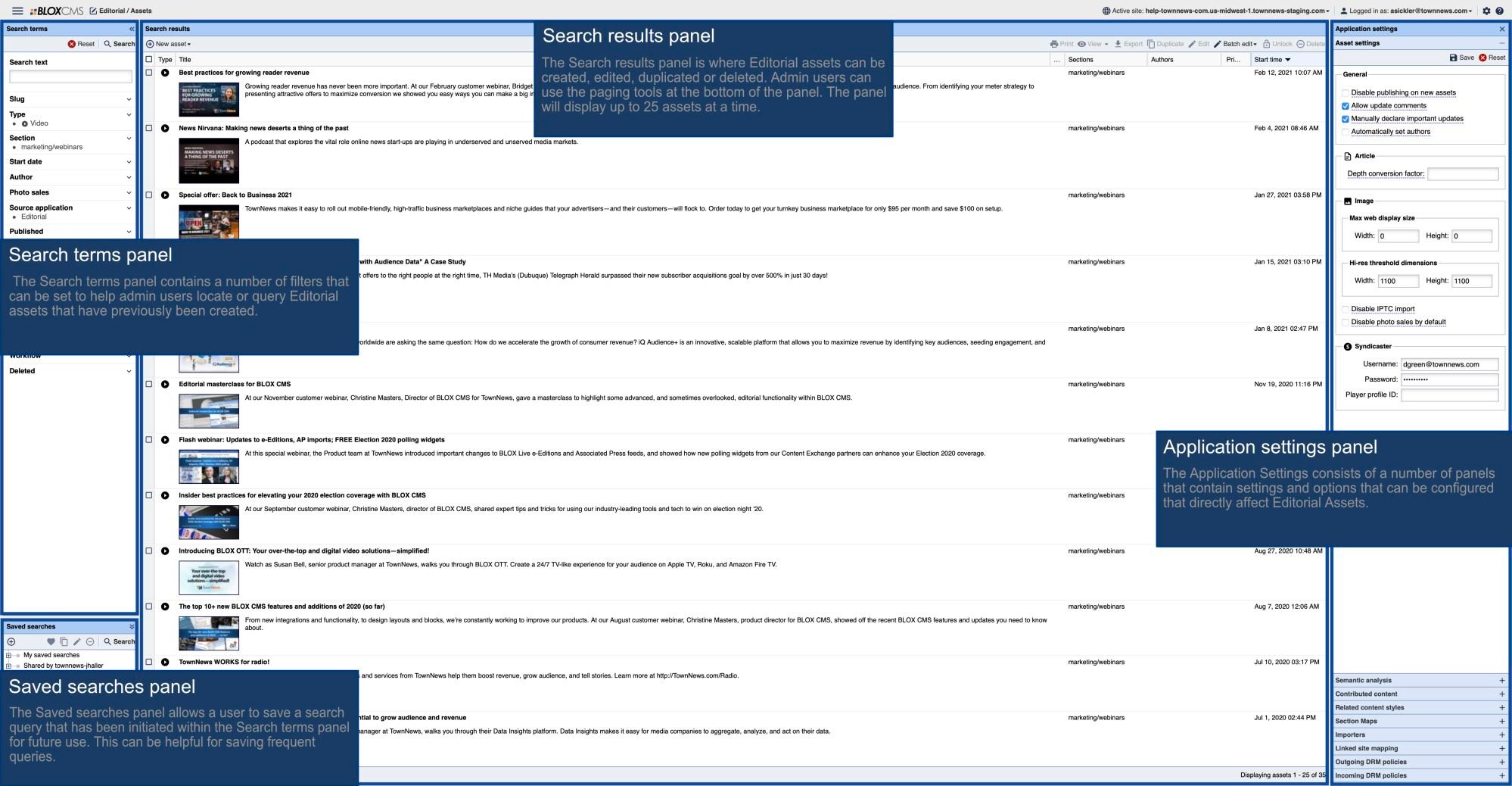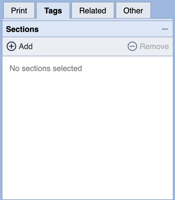Search engine optimization (SEO) is the process of maximizing the number of visitors to a particular website by ensuring that the site appears high on the list of results returned by a search engine.
The many tools built into BLOX CMS, combined with industry best practices, can provide great solutions.
It’s a given that Google (and other search engines) changes their algorithms on a regular basis, which makes it imperative that you stay up-to-date for the best SEO results.
Websites such as searchenginewatch.com are very helpful in understanding how recent or upcoming changes may affect your ranking. But in general, the items that affect ranking are:
- Do search engines consider you an authoritative and trusted source?
- Do you consistently post unique content?
- You are not considered a content spammer and do not try and “trick” the system. Many times Google will penalize websites that they find have artificially high rankings because they have exploited a loophole.
- The more websites that link to you, the higher your PageRank.
BLOX CMS Site Settings
There are several options that should be configured within BLOX.
Site name: This name must exactly match the website declared within Google News.
Titles in URLs: By enabling this option, this ensures that asset titles will be included within the URL string.
Primary domain name: We recommend that all sites use the Redirect to HTTPS option. When a users visit http://domain.com, for example, they'll automatically be redirected to http://www.domain.com. This approach insures that search engines aren't double-indexing content for both sites, as search engines will lower the PageRank on content that it believes is in multiple locations.
Setup and use Google and Microsoft Bing webmaster Tools
Google and Bing both provide webmaster tools that allow webmasters to view how Google indexes sites, pinpoint errors and submit site maps. These webmaster tools are located at the following:
Both tools require that you verify that you are the owner of the website, and they offer several methods for doing so. Generally the easiest method is to add a <meta> tag on your page. If assistance is required, a ticket may be submitted to our Customer Support team. Once the tag has been generated it will need to be added to the site within Page Customizations > Meta Data.
When a website is being added to webmaster tools, the Primary Domain name must be exactly match the domain configured within the Site Settings.
Working with Google Search Console
The following outlines the process of working with Google Search Console. This process closely follows a similar process to working with Bing Webmaster tools.
One of our first recommendations is to make sure that a sitemap is submitted to Google. However, if you also manually submit your sitemap to Google, you'll obtain valuable diagnostic information that you wouldn’t see otherwise.
To confirm if a sitemap has been submitted, navigate to Crawl > Sitemaps. If a sitemap hasn't been provided, it can be submitted.
BLOX generates multiple sitemaps that are all referenced from your www.website.com/sitemap.xml. Sitemaps can be submitted by selecting the Add/Test Sitemap option in the upper-right corner.
The sitemap.xml file references four sitemaps that BLOX automatically generates:
/tncms/sitemap/business.xml: This file contains a listing of all of your enhanced businesses in the business directory, providing an SEO boost for these businesses so search engines don’t have to spider to find them;
/tncms/sitemap/classifieds.xml: This file contains listings of all of your classified ads, as well as your vertical listings so search engines don’t have to spider to find them;
/tncms/sitemap/news.xml: This file file contains listings of all of your news articles for Google News - more on this later…;
/tncms/sitemap/urls.xml: This file contains a listing of all of the URLs or sections of your website, along with hints for the search engine on how often the content changes, and meta-data about the URL such as keywords and descriptions. More on this later as well….
Submit a Sitemap to Google News
There are two primary errors that you may see within this section. One error may be that your website is not part of Google News. If this is the case then you should submit a request to Google News for inclusion.
Google has added a publisher tool that you can see if your website is part of Google News, request inclusion if it isn’t, and make some changes in how your website is listed.
You should certainly review how your website is listed to make sure that Google has the site sections properly labeled. Mismatches here can cause errors due to the website name not matching exactly.
There are two ways to verify how a website is listed in Google News, using the Google publisher tool Partnerdash or you can view how Google lists the site in Google News by completing a website search in Google News (www.site.com).
If a mismatch is found, this be resolved within either the Google Publisher tool or within the BLOX Site Settings. One completed, review the Webmaster tools to verify that the mismatch, and any other errors, have been resolved.
Please be mindful that Google makes changes frequently and that Google Forums can be an excellent resource for Google-related questions.
Verify that meta-data is correct
There are several settings within the BLOX URL map that may affect SEO.
URL Page Properties
The URL Page Properties for a URL can be located by navigating to Settings > URLs. Next, double-click the URL and then the Page Properties tab.
Page title, description and keywords are all included as meta-data to every page that’s part of that URL and provide additional data that the search engines can index.
Google defines the priority field as:
“..the priority of a URL relative to all the other URLs on the website. This priority can range from 1.0 (extremely important) to 0.1 (not important at all).
Note that the priority tag does not affect your website ranking in Google search results. Priority values are only considered relative to other pages on your website so, assigning a high priority (or specifying the same priority for all URLs) will not boost your entire website search ranking”.
The change frequency is a hint that goes into the URLs sitemap that tells the search engine how often content in that section may change.
Use keyword tags on articles
Keyword tags can boost SEO in a multitude of ways. For example, each keyword generates a link to a topic page. Each topic page will show a list of all content that has the same keyword tag.
Keyword tags are also added to the article page as additional keyword meta-data for search engine indexing. Google and Bing have stated that keyword meta-data tags are not considered, but BLOX also uses those tags to generate Google News-keywords.
BLOX also uses the keyword tags to feed to Google News as part of the news sitemap. For more information on tags, please view the following:
Implement social media pages for your newspaper
PageRank is an algorithm that was developed by Google to rank websites in their web search results. The more links to your content, the higher the PageRank will be. Increasing the “sharing” of content on social media websites will help improve your PageRank.
The Notifier tool in BLOX can help simplify sharing content on Facebook and Twitter. But, don’t forget the other platforms such as Google+, Instagram, Pinterest, and others. For more information on BLOX Notifier, please view the following:
Mobile-friendly
The shift from desktop to mobile has caused search engines to decrease the PageRank of sites that don't have a suitable mobile experience.
Monitor website load-times
Search engines will penalize a site if it loads too slowly. History also shows that users will not view nearly as many pages if load time is degrading their experience.
Website load time is directly related to:
- Page size: How long is the page? Most studies show that readers rarely go “below the fold.” Google Analytics has a heat map that will show you where users click on your website.
- Third-party widgets: Facebook and Twitter widgets can be notoriously slow at times and directly affect the page download. Examine all third-party content on your website to evaluate its impact. Having widgets with minimal load times and only where necessary can improve overall load time.
- Banner ads: Remnant ads can impact page load as they may bounce from network to network looking for a fill. Flash or animated GIF ads can be extremely large which will impact the page load time. We all know that ads are necessary, but the key is to determine site goals for suitable load times. The goal is to plan a strategy that meets these goals, while providing an enjoyable user-experience.
A good free tool to use is http://webpagecheck.org. This tool can be used to generate a waterfall chart that shows each element on the page and its impact on page load time.
Additional changes that can be made...
There are changes that can be made to the robots.txt file that can improve SEO for your site. Those changes are summarized in the following Software Release.
Summary
There is no silver bullet when it comes to SEO. It’s a given that search engines change their algorithms, the key is routine website maintenance. Just like a car, without maintenance, the car will not operate efficiently and will eventually die. A poorly maintained website will result in a less-than-stellar web-experience. There are many factors that must be routinely examined, monitored and maintained, and if done correctly, can lead to increased performance, revenue and users. Learn to use and harness the advanced search tools offered by search engines and examine how both your content and competitors content are listed, such as Google Page Speed, webpagetest.org and others.














